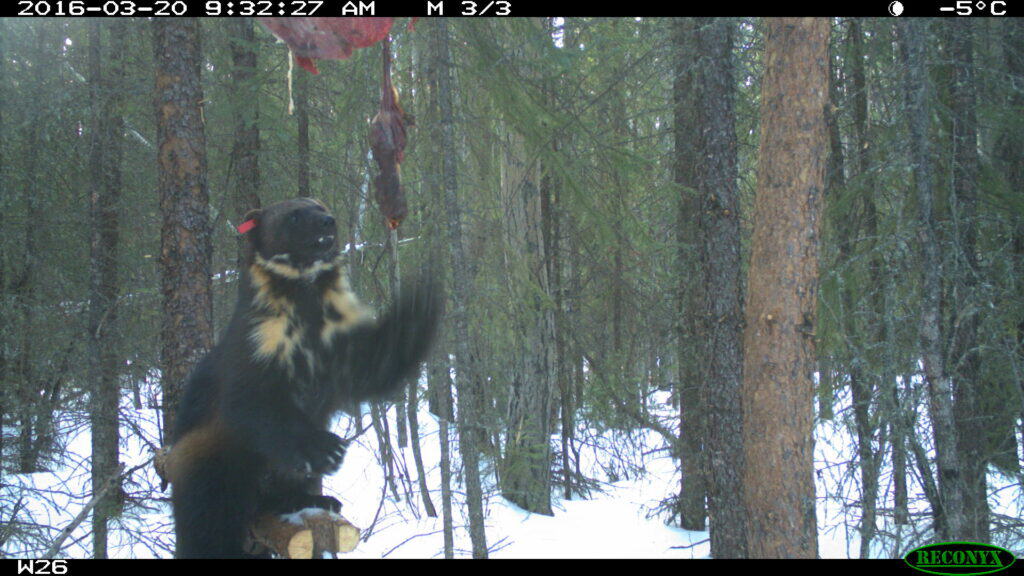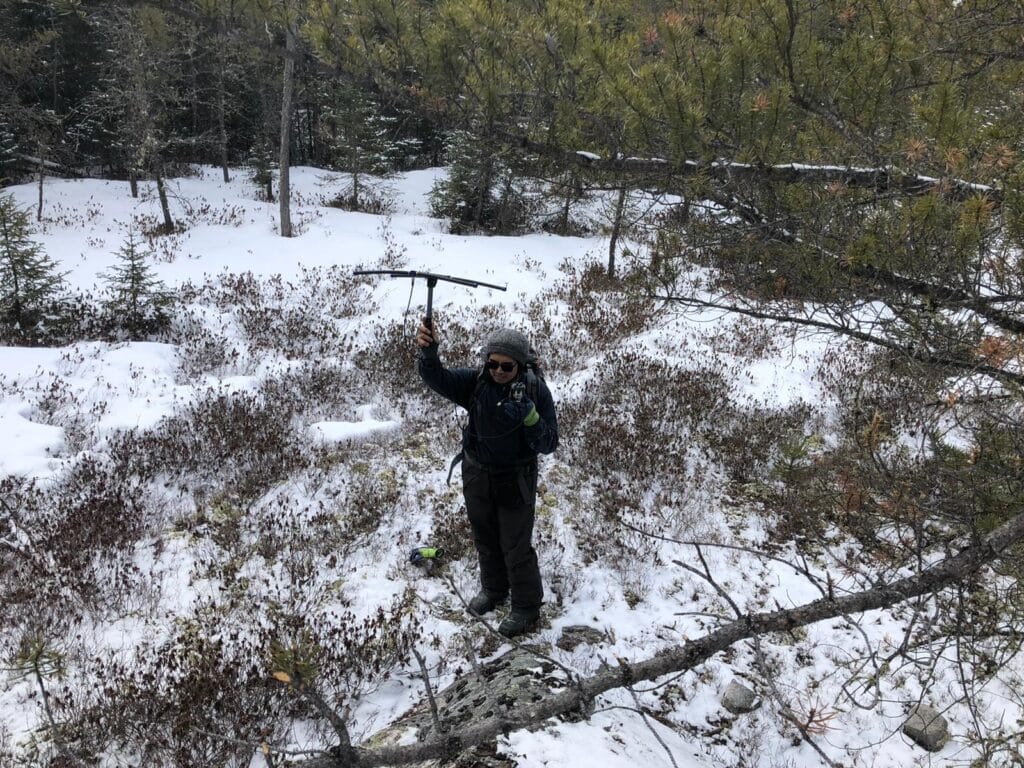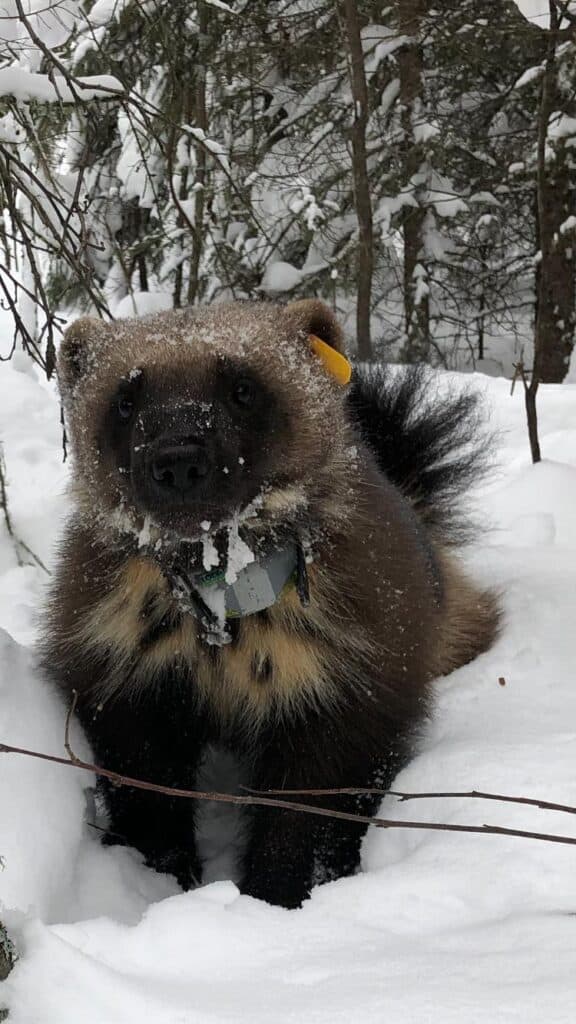Share this article
Wildlife Featured in this article
- Wolverine
Wild Cam: Wolverine densities vary across Canadian boreal forest
JWM article shows legal trapping is the primary source of death in Alberta and Ontario
After decades of uncertainty, researchers have established population estimates for wolverines in two boreal forest areas in Alberta and Ontario.
The results reveal that the carnivore’s populations are denser in Alberta than Ontario, though trapping was a major conservation concern for both populations.
In both areas, trapping caused twice as many deaths as predation and vehicle collisions combined, said Matt Scrafford, a conservation scientist at the Wildlife Conservation Society Canada who was the principal investigator of both studies.

In a study published recently in The Journal of Wildlife Management, Scrafford and his colleagues analyzed and compared the two populations of wolverines (Gulo gulo)—one in each province. In northwestern Alberta, Scrafford and his team tracked wolverines around Rainbow Lake from 2013 to 2016. In Ontario, they estimated the population around Red Lake in the northwest of the province from 2018 to 2022.
“They’re very hard to study,” Scrafford said. “They live in very remote places.”

The researchers used baited poles fixed with trail cameras. The camera, aimed at the best angle to capture photos of the animals’ unique chest patterns, would go off as the wolverine walked up the pole, which sticks out parallel to the ground.

They also captured wolverines using traps, placing unique ear tags on them for identification.
Based on the live captures and the photos, Scrafford and his colleagues estimated wolverine population numbers at these locations. They found twice as many wolverines in Rainbow Lake, Alberta, as in Red Lake, Ontario, per capita. In Rainbow Lake, an area important for the oil and gas industry, the team estimated 6.7 wolverines per 1,000 square kilometers, while at Red Lake they estimated about 3.5 wolverines per 1,000 square kilometers.
The researchers aren’t sure why there are more wolverines around the Alberta site than the Ontario site, but they think it might be due to the latter being farther south. Rainbow Lake is within core wolverine distribution, while Red Lake is near the southern end of the species’ range in Ontario—there aren’t many wolverines south of that area.

The researchers also tracked the animals with GPS and VHF collars for several years—45 in Rainbow Lake and 53 in Red Lake. These devices revealed some of the common causes of death for the carnivores, as well as information about their denning habits and typical diet.
Overall, trapping was the primary cause of death for wolverines by a long shot. Alberta permits two animals per year per trapper—one intentional and one incidental—while in Ontario, trapping of wolverines by non-Indigenous trappers is prohibited due to their threatened status in the province. Nonetheless, trappers accidently catch wolverines in traps meant for martens (Martes americana), lynx (Lynx canadensis), wolves (Canis lupus), or other wildlife in both locations.
In fact, Scrafford and his colleagues removed traps and snares from the limbs and necks of several wolverines they captured during their study. Others were missing paws—possibly from getting caught in snares in the past. “They likely had to chew their paw off to free themselves,” Scrafford said.

Roadkill and wolf predation were also sources of death in both locations, with a handful of kills in each province. The wolf kills happened mostly along roads, so humans may be indirectly responsible for the number of dead wolverines in these areas by providing access routes for the canids deep into wolverine habitat.

“We found fairly low survival in Rainbow Lake and slightly higher survival in Red Lake,” Scrafford said.
As a result, the population trajectory showed evidence of decline in northwestern Alberta, with a 50-60% yearly survival rate, while the population in northwestern Ontario was predicted to remain stable, with an 85-86% yearly survival rate. Since these species are long lived and slow to reproduce, the cutoff for a stable population is about 75% yearly survival, Scrafford said.
Scrafford said that reducing access roads and seismic cut lines used by the oil and gas industry might be one way of reducing deaths, since both human trappers and wolves use these features to access wolverine habitat.

This photo essay is part of an occasional series from The Wildlife Society featuring photos and video images of wildlife taken with camera traps and other equipment. Check out other entries in the series here. If you’re working on an interesting camera trap research project or one that has a series of good photos you’d like to share, email Josh at jlearn@wildlife.org.
This article features research that was published in a TWS peer-reviewed journal. Individual online access to all TWS journal articles is a benefit of membership. Join TWS now to read the latest in wildlife research.
Header Image: Wolverines are found in both Ontario and Alberta. Credit: Liam Cowan








